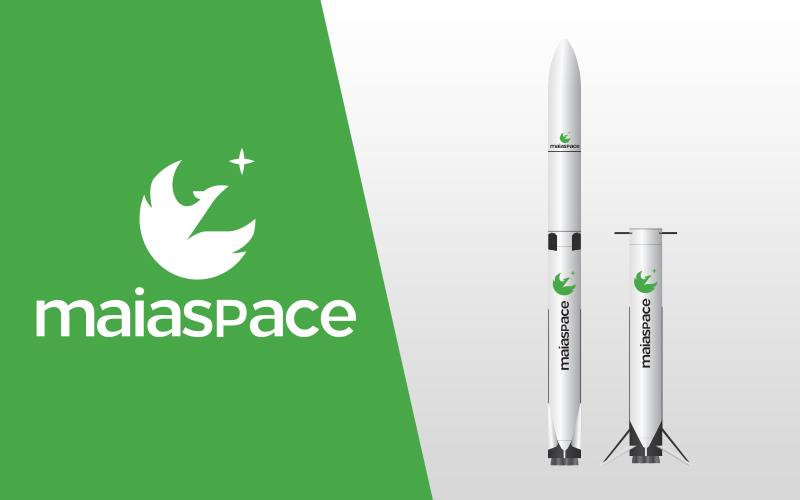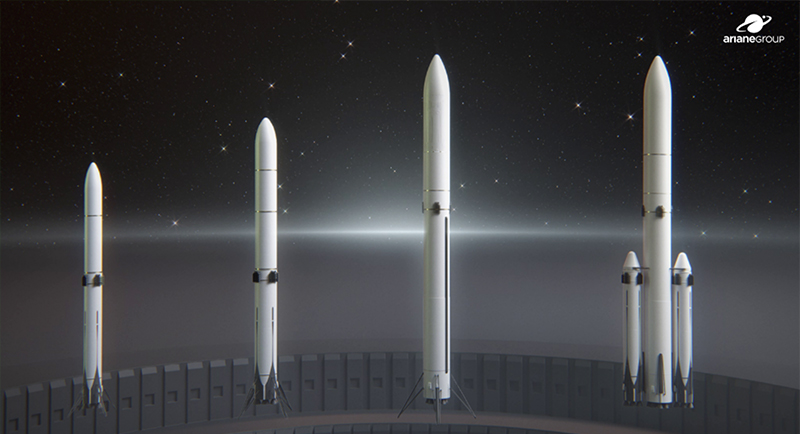
Updated information: An exclusive update on ArianeGroup’s MaiaSpace startup.
On December 6, 2021, the French Ministry of Economy, Finance, and Recovery Bruno Le Maire announced that ArianeGroup would create an agile new launch startup that would develop a reusable minilauncher. Almost two months later, we are yet to receive any official announcement of the creation of this new company from ArianeGroup and specific details are few and far between.
The announcement
The December 6 announcement was part of a presentation on French space strategy and industry policy in Vernon. The primary focus of the presentation appears to have been an assurance to the municipality that shifting the production of the Vinci engine that will power the upper stage of the Ariane 6 from France to Germany would not cost jobs.
This assurance included the announcement that the production of Prometheus, a reusable rocket engine being developed under a contract from the European Space Agency, would represent 150 jobs from 2023 to 2025. In order to assure this, however, there needed to be a use for Prometheus over and above Themis, a reusable rocket booster demonstrator also being developed under an ESA contract.
Framing it as a chance to “make up for a bad strategic choice ten years ago” when Europe failed to recognize the threat the reusable SpaceX Falcon 9 posed to its launch industry, the minister announced that France, under the leadership of ArianeGroup, would develop a reusable launch vehicle called Maïa, although the trema (the two dots above the “i”) appears to have been subsequently dropped.
Despite many new launch vehicles taking a decade or more to be developed, the minister set an ambitious 2026 maiden launch date for Maia. In order to achieve this ambitious schedule, he explained that a “minimum of 100 additional jobs” would be brought to Vernon. Again, it appeared that the retention and creation of jobs was the primary focus despite the rhetoric of making up for poor strategic choices.
The company
Since the announcement, almost two months have passed. Despite not making any public announcement themselves, ArianeGroup has begun to share details with the media.
During a conversation with European Spaceflight, an ArianeGroup representative explained that the company wanted Maiaspace to be an agile disruptive force in the French launch market that could move independently from its parent company.
In order to achieve this goal, Maiaspace will utilize the lessons learned in the development of Themis to fast-track work on Maia. With the addition of a funded and all but developed rocket engine, the company will be entering the market with a head start that most launch startups could only dream of.
Despite this head start, the lumbering size of an aerospace giant parent company appears to be delaying progress. Again speaking to European Spaceflight, ArianeGroup was unable to share how many people would be employed by Maiaspace, what the company structure would look like, and if a CEO has been tapped to lead the fledgling company. In fact, besides a logo, a rendering, and some industry catchphrases, there appears to be very little to the company at this stage.
Registre du Commerce et des Sociétés (Trade and Company Registry) filings show that the company was registered on January 4, 2022, almost a full month after the venture was first announced. The company’s head office is listed as Building A37 of the ArianeGroup facility in Vernon. Additional filings show that it was previously registered under ASL Proj 1 in 2016 with ArianeGroup’s Paris location listed as its head office.
This begs the question, was ArianeGroup at all ready to announce Maiaspace, or did political expediency necessitate the announcement of a concept still in its formative stages?
The vehicle
Following the naming convention of Arianespace and its Ariane vehicles, Maiaspace will produce Maia.
According to the December 6 announcement, the two-stage minilauncher will be powered by a methalox Prometheus engine. Subsequent information supplied to the media outlined that it will be capable of carrying between 500 and 1,000 kilograms of payload depending on the orbit. It will be launched from the Guiana Space Center’s old Diamant launch facility, which the French space agency CNES recently opened up for use by commercial European launch vehicle operators.
Initial renderings of the vehicle released by ArianeGroup do appear to suggest a multi-engine setup. However, with each engine producing around 980 kN of thrust, it is unlikely that a vehicle of this size would need more than a single Prometheus engine. This may reduce redundancy that multi-engine setups like Falcon 9 allow when completing propulsive touchdowns. This is, however, assuming Maia will utilize a propulsive recovery system.
Although many have speculated that it will utilize a propulsive recovery system because of the current design’s similarities with the Falcon 9, no decision has been made. This type of recovery system requires the vehicle to retain a portion of its propellant for touchdowns which reduces its overall performance. In larger vehicles, this tradeoff is manageable. However, in smaller vehicles, the numbers become far less palatable. As a result, Maia may instead utilize a parachute system much like what Rocket Lab is attempting to perfect with their Electron vehicle.
The purpose
Please note that the following section should be considered with the same speculative nature with which it was written. Although I am inclined to believe that the stated reasons for Maiaspace are misleading, there is every chance that its purpose is exactly as has been outlined by Bruno Le Maire and ArianeGroup.
The stated purpose of Maiaspace is to “make up for a bad strategic choice ten years ago” by pursuing reusable launch capabilities. However, both ArianeGroup, ESA, and several commercial operators across Europe are currently working on reusable launch capabilities.
As outlined above, Maiaspace has also been touted as a way to ensure that Vernon retains jobs lost as a result of moving the production of the Ariane 6 Vinci engine to Germany. Although politically this makes sense, there is no significant benefit to ArianeGroup in ensuring Vernon voters are happy.
The logical conclusion then is that ArianeGroup sees a gap in the market that they can exploit, the gap being payloads below 1,000kgs that need to be launched into precise orbits. With the creation of multiple telecommunication megaconstellations, there is a market for such a launcher. However, this market has many competitors vying to fill the gap.
Currently, Rocket Lab’s Electron launch vehicle is operational and the company is in the process of implementing a reusable launch system. Additionally, Virgin Orbit has recently entered the same market with Astra hot on its heels. Several launch providers in this segment plan to debut their vehicles in 2022 including Europe’s Isar Aerospace, Rocket Factory Augsburg, Orbex, and Skyrora, each of whom will offer affordable access to precise orbits. Is there really space in the market for a vehicle that is, at best, four years away from its maiden flight?

There is, potentially, a clue to the mystery in an image being circulated by ArianeGroup showing a family of launch vehicles based on Maia. ArianeGroup has told European Spaceflight that although the larger vehicles are based on Maia, they are part of a response to ESA’s New European Space Transportation Solutions (NESTS) program. If these vehicles are developed, they would not fly under the Maiaspace banner and would likely join the Arianespace lineup potentially negating the need for Soyuz and Vega. As a result, Maiaspace may be a vehicle to ensure that ArianeGroup’s future launcher projects are greenlit and funded at this year’s ESA ministerial meeting in Paris this November.




